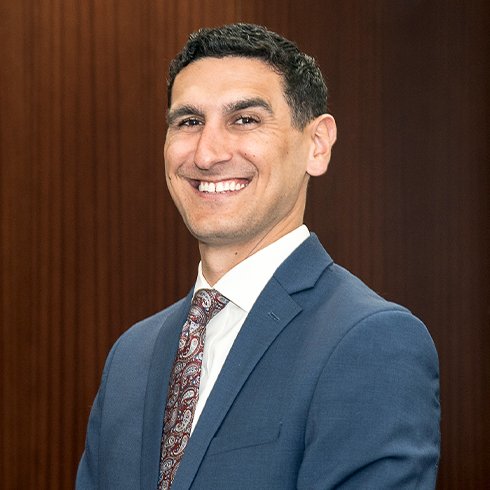Motor vehicle accidents are an unfortunate reality on Maryland’s roads, resulting in injuries, fatalities, and significant economic loss. Among these, bus accidents stand out as distinct from other types of motor vehicle accidents due to their scale, complexity, and the variety of factors involved. Understanding the differences between bus accidents and other motor vehicle accidents can help illuminate the unique challenges these incidents pose, from legal concerns to recovery processes. These distinctions are critical, as they can influence everything from the investigation process to liability considerations and compensation for victims. Alpert Schreyer, LLC provides skilled legal representation for victims of bus accidents, guiding them through the process to secure the compensation they deserve.
The Scale of Bus Accidents
One of the most striking differences between bus accidents and other types of motor vehicle accidents lies in the scale of the incidents. Buses are considerably larger and heavier than typical passenger vehicles, making their involvement in an accident far more catastrophic in many cases. When a bus is involved in a collision, it can affect numerous individuals, both inside and outside the bus. Unlike private car accidents that usually involve only a handful of people, a single bus accident can result in dozens of injuries, especially if the bus was at full capacity at the time of the crash.
Bus accidents tend to garner more public attention due to their size and the potential number of casualties. When a bus crashes, emergency responders and investigators must handle a scene that is typically much larger and more complicated than a car crash. The presence of multiple victims complicates rescue and treatment efforts, and investigating the crash scene becomes more involved as authorities work to determine the cause of the accident and ensure that all victims receive necessary care.
In contrast, accidents involving personal cars or even trucks may have fewer immediate victims, which can make them easier to manage from both a medical and legal standpoint. However, that does not diminish the seriousness of these accidents, as even a small crash can have devastating impacts on those involved. Still, the sheer number of individuals that can be affected in a bus accident makes it unique compared to other motor vehicle incidents.
Different Types of Buses Involved in Accidents
When examining bus accidents, it is also essential to recognize the variety of buses that can be involved in a crash. In Maryland, bus accidents may include public transportation buses, school buses, charter buses, and private shuttle buses. Each type of bus comes with its own set of considerations and legal regulations, which distinguish these accidents from others.
For example, school bus accidents are particularly sensitive, as they involve children, who are considered a vulnerable population. The aftermath of such accidents often sparks public outrage and demands for accountability. The legal process may differ slightly, as school bus operations are typically tied to public or municipal organizations, adding layers of complexity when seeking compensation or determining liability. In contrast, public transportation bus accidents involve government-operated entities, which are governed by specific regulations that can make the claims process more complicated for victims.
On the other hand, accidents involving personal vehicles are typically more straightforward in terms of determining liability. Private car owners and their insurance companies are often the sole parties involved, simplifying the claims process. With buses, the involvement of larger, sometimes governmental, entities makes the path to compensation more complex. Additionally, understanding the ownership and operation of the bus in question can have significant legal ramifications.
Amazing firm. Went above and beyond in making me feel welcomed, informed, and at ease considering the serious reasons for me being there. It was my first time dealing with something like this and it was comforting knowing I had a whole team behind me working to get the best outcome possible which they did. Highly recommend this firm to anyone looking for a good reliable lawyer who will work with you and be considerate of your well being.” - Daniel Torres
Liability in Bus Accidents vs. Other Motor Vehicle Accidents
Another key difference between bus accidents and other motor vehicle accidents is how liability is determined. In bus accidents, liability is often spread among several parties, including the bus driver, the bus company, the manufacturer of the bus, and even governmental entities if public transit is involved. This contrasts with accidents involving personal vehicles, where liability usually lies with one or both drivers involved in the collision.
For instance, if a bus driver is found to be negligent, the company that employs the driver may also be held liable under the legal doctrine of vicarious liability, which holds employers responsible for the actions of their employees while they are on duty. In some cases, the bus company may be found negligent if it is determined that the company failed to maintain the bus properly or did not adequately train the driver. If a manufacturing defect is found to have contributed to the accident, the bus manufacturer may also be held responsible.
In comparison, liability in car accidents is often easier to determine, as it usually involves only the drivers and their insurers. In these cases, one driver is typically found at fault based on traffic laws or driving behavior, and that driver’s insurance is responsible for compensating the victims. This streamlined approach to liability makes resolving car accident claims somewhat more predictable than in bus accident cases, where multiple layers of accountability can complicate the process.
Severity of Injuries in Bus Accidents vs. Car Accidents
The nature of injuries sustained in bus accidents also tends to differ significantly from those in typical car accidents. Passengers in buses are generally not required to wear seat belts, which can lead to more severe injuries when accidents occur. In a collision, bus passengers may be thrown from their seats or struck by other passengers, leading to broken bones, head injuries, and in some cases, fatalities. The lack of safety restraints in buses, combined with their large size and weight, often results in more severe injuries for bus passengers compared to those in smaller vehicles.
Additionally, because buses sit higher off the ground than personal vehicles, accidents involving pedestrians or smaller cars are more likely to result in life-threatening injuries or death for those outside the bus. When a bus collides with a pedestrian, the size discrepancy often means the pedestrian sustains catastrophic injuries, as the impact force is significantly greater than in accidents involving smaller vehicles.
By contrast, personal vehicles are equipped with a range of safety features, such as airbags, seat belts, and crumple zones designed to protect passengers. While injuries in car accidents can still be severe, the availability of these safety mechanisms can mitigate the risk of life-threatening harm, something that is less prevalent in bus accidents.
Value of a Personal Injury Case Choosing a Personal Injury AttorneyRelated Videos
Challenges in Pursuing Compensation for Bus Accident Victims
Victims of bus accidents in Maryland face unique challenges when seeking compensation compared to those involved in regular motor vehicle accidents. The complexity of determining fault in a bus accident can delay the claims process, and the involvement of larger entities, such as public transportation systems or bus companies, often means that victims must navigate a more complicated legal landscape.
In a standard car accident, victims typically file a claim with the at-fault driver’s insurance company. This process can still be arduous but tends to be more straightforward than dealing with a large corporation or governmental body. In bus accidents, victims may need to engage in legal action against multiple parties, including the bus driver, the operating company, and in some cases, the manufacturer of the bus. Each of these entities will likely have its own insurance provider, legal team, and defense strategy, making it more difficult for victims to secure compensation.
Moreover, the injuries sustained in bus accidents are often more severe, leading to higher medical costs and longer recovery periods. Victims may require substantial compensation to cover not only medical expenses but also lost wages and pain and suffering. However, given the complex liability issues, securing this compensation can take longer and require a more intricate legal strategy than in typical motor vehicle accidents.
Verdicts & Settlements
Regulations Governing Bus Safety and Operations
Another factor that sets bus accidents apart from other motor vehicle accidents is the stringent regulations governing bus safety and operations. Buses are required to follow federal and state regulations that dictate everything from driver qualifications to vehicle maintenance standards. For example, in Maryland, bus drivers must meet certain licensing and training requirements, and bus companies are held to high safety standards, particularly when operating school buses or public transit vehicles.
These regulations are designed to minimize the risk of accidents, but when violations occur, they can complicate legal proceedings. If a bus company is found to have violated these regulations, such as by failing to maintain its fleet or hiring inadequately trained drivers, this can significantly affect liability determinations in a lawsuit. In contrast, while all drivers must adhere to traffic laws, private vehicle operators are not subject to the same level of regulatory oversight as bus drivers and companies, which makes the investigation process in personal vehicle accidents less complex.
Bus accidents in Maryland are distinct from other motor vehicle accidents in several ways, from the scale of the incidents to the complexity of determining liability and pursuing compensation. The involvement of larger vehicles, the potential for multiple parties to be held responsible, and the regulatory framework governing bus operations all contribute to the unique nature of these accidents. For victims, the road to recovery can be long and challenging, as they navigate the legal complexities involved in holding responsible parties accountable.
If you or a loved one has been injured in a bus accident in Maryland, it is essential to seek legal guidance from experienced attorneys who understand the intricacies of these cases. Alpert Schreyer, LLC is dedicated to helping accident victims pursue the compensation they deserve and can provide the legal support needed to navigate this challenging process. Reach out to us today to discuss your case and explore your legal options.
















